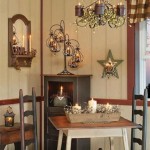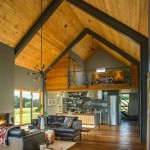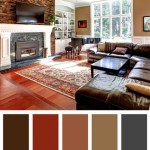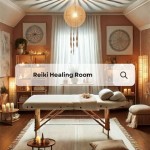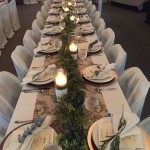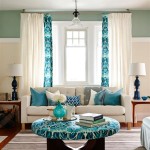Library Room Decoration Ideas: Creating a Functional and Inspiring Space
A library room, whether in a private residence or a public institution, serves as a sanctuary for knowledge and contemplation. Its design and decoration play a crucial role in fostering a conducive environment for reading, studying, and exploring the world of literature. Effective library room decoration goes beyond mere aesthetics; it considers functionality, comfort, and the overall purpose of the space. This article explores various ideas for decorating a library room to create a functional and inspiring environment.
Optimizing Space and Arrangement
The foundation of any well-decorated library room lies in efficient space management and thoughtful arrangement. Before considering decorative elements, it is imperative to evaluate the room's dimensions and the amount of bookshelf space required. Planning the layout strategically can maximize the available area and create a sense of spaciousness, even in smaller rooms.
Start by assessing the bookshelf needs. Consider the number of books to be housed and whether additional storage for periodicals, manuscripts, or other materials is necessary. Built-in bookshelves are often the most space-efficient option, as they can be customized to fit the room's specific dimensions. They also offer a clean, integrated aesthetic that enhances the room's overall design. Alternatively, freestanding bookshelves can provide flexibility in arrangement and allow for future adjustments to the layout. When choosing bookshelves, prioritize sturdy construction and adjustable shelves to accommodate books of varying sizes.
The placement of bookshelves is equally crucial. Consider locating taller bookshelves along walls with minimal window exposure to avoid direct sunlight, which can damage books over time. Shorter bookshelves can be placed under windows or used as room dividers to create distinct reading or study zones. Ensure adequate spacing between bookshelves to facilitate easy browsing and access to the books.
Beyond bookshelves, comfortable seating is essential for a functional library room. A comfortable armchair or reading nook is a must-have, providing a dedicated space for relaxation and immersion in literature. Depending on the room's size and intended use, other seating options may include a sofa, a loveseat, or individual reading chairs. These should be positioned to optimize natural light, if possible, or complemented by effective artificial lighting.
A desk or table is also an important element for writing, studying, or research. The size and style of the desk should be proportionate to the room and complement the overall design aesthetic. Consider a desk with ample storage for writing supplies, research materials, and a computer or laptop. The desk should be positioned to minimize glare on the screen and provide a comfortable working environment.
Finally, traffic flow is an important consideration. Ensure that there is sufficient space between furniture pieces to allow for easy movement throughout the room. Avoid creating obstacles or bottlenecks that could impede navigation or create a sense of clutter. By carefully planning the arrangement of furniture and bookshelves, it is possible to create a library room that is both functional and aesthetically pleasing.
Creating a Comfortable and Inviting Atmosphere
The ambiance of a library room is just as important as its physical layout. Color palettes, lighting, and decorative elements can all contribute to creating a comfortable and inviting atmosphere. The goal is to design a space that encourages relaxation, concentration, and a love of reading.
Color plays a significant role in influencing mood and perception. Neutral colors, such as beige, gray, and off-white, are often preferred for library rooms as they provide a calming and sophisticated backdrop for the books and other decorative elements. These colors also reflect light effectively, making the room feel brighter and more spacious. Accent colors can be incorporated through accessories, such as throw pillows, rugs, and artwork, to add visual interest and personality. Darker, richer colors, such as deep blues, greens, or browns, can be used sparingly to create a sense of warmth and intimacy, particularly in smaller library rooms.
Lighting is critical for creating a comfortable reading environment. Natural light is always desirable, but should be managed to prevent damage to books. Sheer curtains or blinds can filter sunlight and reduce glare. Artificial lighting should be carefully planned to provide adequate illumination for reading, writing, and browsing bookshelves. A combination of ambient, task, and accent lighting is typically the most effective approach. Ambient lighting provides overall illumination for the room, while task lighting focuses on specific areas, such as reading nooks or desks. Accent lighting highlights decorative objects, such as artwork or sculptures, adding visual interest and depth to the room.
Textiles and textures contribute significantly to the room's overall comfort and aesthetic. A plush rug can add warmth and softness underfoot, creating a cozy and inviting atmosphere. Comfortable upholstery on seating pieces is essential for relaxation and extended reading sessions. Throw pillows and blankets can add visual interest and enhance the sense of comfort. Consider incorporating tactile materials, such as velvet, wool, or leather, to add depth and richness to the room's design.
Personal touches are essential for creating a library room that reflects individual tastes and interests. Artwork, photographs, and other decorative objects can add personality and create a sense of connection to the space. Family heirlooms, travel souvenirs, or collections of meaningful objects can all contribute to the room's unique character. Bookends, decorative boxes, and other small accessories can be used to organize and display books and other items in an aesthetically pleasing manner. Plants can add a touch of nature and freshness to the room, improving air quality and creating a more welcoming environment. However, it’s important to choose plants that thrive in the specific lighting conditions of the room.
Finally, consider soundproofing measures to minimize distractions and create a more tranquil environment. Thick curtains, rugs, and upholstered furniture can all help to absorb sound and reduce echo. If noise from outside is a concern, consider installing soundproof windows or doors. By carefully considering these elements, it is possible to create a library room that is both comfortable and conducive to reading and study.
Incorporating Technology and Functionality
While a library room is traditionally associated with books and quiet contemplation, it is important to acknowledge the role of technology in the modern world. Incorporating technology seamlessly into the library room design can enhance its functionality and cater to the needs of contemporary users.
Wireless internet access is essential for accessing online resources, conducting research, and staying connected. Ensure that the library room has a strong and reliable Wi-Fi signal. Consider installing multiple access points if the room is large or if there are areas with weak signal strength. Provide a dedicated charging station for electronic devices, such as laptops, tablets, and smartphones. This can be a simple power strip or a more elaborate charging station with multiple ports and cable management features.
Adequate lighting is crucial for both reading and working on electronic devices. Monitor glare can cause eye strain and fatigue, so it is important to position the desk or work area to minimize glare from windows or overhead lights. A desk lamp with adjustable brightness and color temperature can provide optimal illumination for working on a computer or reading printed materials. Consider using an ergonomic keyboard and mouse to reduce strain on the wrists and hands.
If the library room is intended for multimedia use, consider incorporating a television or projector screen. These can be used for watching documentaries, educational videos, or online lectures. Choose a screen size that is appropriate for the room's dimensions and ensure that the seating is positioned to provide a comfortable viewing angle. Install a high-quality sound system to enhance the audio experience. Consider using wireless speakers to minimize clutter and allow for flexible placement.
While technology is important, it is also essential to maintain a balance with the traditional elements of a library room. Conceal cables and wires to minimize clutter and maintain a clean and organized appearance. Choose furniture and accessories that complement the technology and blend seamlessly into the overall design aesthetic. Ensure that there are plenty of outlets and charging ports available, but avoid overcrowding the room with electronic devices. The goal is to integrate technology in a way that enhances the functionality of the library room without detracting from its inherent charm and character.
By carefully considering these factors, it is possible to create a library room that is both functional and aesthetically pleasing, catering to the needs of both traditional readers and modern technology users.

45 Best Home Library Ideas Reading Nooks At

5 Easy Tips To Design A Perfect Library In Your Home

Shelf Life Home Library Design Ideas Country

42 Home Library Ideas You Ll Want To Read In All Day Libraries Design

How To Make A Home Library Extra Space Storage

Latest Home Library Design Ideas Cafe
:max_bytes(150000):strip_icc()/13-Minwawa-18d4d0bf0e5748d6aaf67117f3da32bf.jpg?strip=all)
42 Home Library Ideas You Ll Want To Read In All Day

40 Home Library Design Ideas For A Remarkable Interior Decoist
:strip_icc()/1.stockshelves-ac07892ff2c14950b69ed88cb9cee80d.jpg?strip=all)
20 Home Library Design Ideas That Bookworms Will Love

Latest Home Library Design Ideas Cafe
